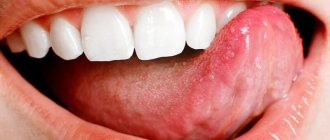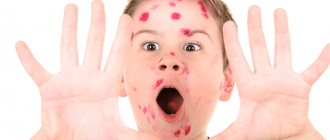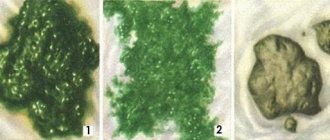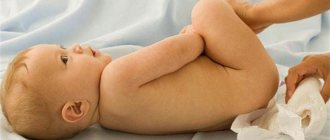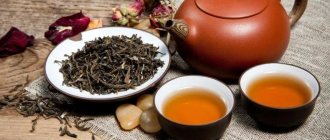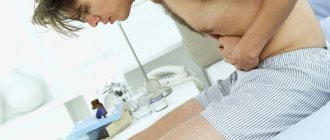Light diarrhea often indicates the development of problems in the digestive system. The color of stool and its consistency become the main criteria for determining the cause and severity of the disease. Often, light-colored stools indicate the body’s reaction to a particular food product. Normally, this condition goes away on its own after 2 days. If diarrhea is accompanied by a deterioration in health, then you need to undergo an examination to rule out intestinal parasites and diseases of the internal organs.
Causes of light diarrhea
In a healthy person, stool is normally brown in color. This color is provided by the bile pigment bilirubin, which is broken down in the duodenum during digestion. If this process is disrupted, bile penetrates the intestines and gives a lighter shade to the stool.
The main causes of light-colored diarrhea are:
- Crohn's disease;
- hepatitis;
- cirrhosis;
- pancreatitis;
- cholelithiasis;
- cholecystitis;
- taking antibiotics;
- poisoning from alcoholic beverages or poor-quality food;
- malignant formations in the gastrointestinal tract.
In addition, banal overeating and taking oral contraceptives can discolor stool. If a child has light diarrhea, then first of all you need to pay attention to the child’s nutrition and the condition of his teeth. In infants, defecation disorders can be caused by teething, a change in formula, the introduction of complementary foods, or deviations in the diet of the nursing mother.
Causes of secretory diarrhea
Exogenous
- Medications.
Taking certain medications can lead to water diarrhea. They increase the osmotic pressure inside the intestine or change the transport of ions in the intestinal wall. Watery diarrhea often occurs when taking laxatives, diuretics, drugs for the treatment of bronchial asthma and thyroid diseases. Drugs with cholinergic effects have a great influence. These include some myasthenic, cardiotonic and antihypertensive drugs, as well as antidepressants and drugs for the treatment of dementia. - Toxins.
Secretory diarrhea can occur against the background of poisoning with mushrooms, arsenic, organophosphorus compounds, insecticides, alcohol and a number of other drugs. - Viral and bacterial infections .
A number of infections cause watery diarrhea due to exposure to the pathogens themselves and their toxins. These are cholera, yersiniosis, some strains of E. coli and staphylococci that produce enterotoxins.
Endogenous
- Hereditary diseases.
There is a congenital secretory pathology (chloridorrhea, sodium diarrhea), the cause of which lies in a mutation in the genes of transport proteins of the intestinal wall. The disease manifests itself in a child from birth. - Hormone-producing tumors.
Some tumors can contribute to the pathological secretion of ions and water in the intestines - medullary thyroid carcinoma, VIPoma, gastrinoma, mastocytoma and others. - Bile salts.
The entry of unadsorbed bile acids and free long-chain fatty acids into the large intestine leads to the secretion of water into the intestinal lumen. The reason for this is impaired absorption of bile acids due to diseases (for example, Crohn's disease) or due to a decrease in the area of absorption. This happens after resection of more than 100 cm of the ileum.
Stool lightening: when to worry
In order to promptly notice disturbances in the functioning of the digestive system, you need to pay attention to the coloring of stool and its consistency. Bile pigments, for certain reasons, are susceptible to certain influences in the intestines. This in turn can lead to discoloration of stool.
Light brown diarrhea
Quite often, light brown stool can be observed by people whose diet consists of a huge amount of plant foods. The rapid movement of the food bolus through the intestines leads to incomplete digestion and absorption. As a result, a light brown stool is produced. This condition does not pose any threat to human health. In order to normalize the functioning of the gastrointestinal tract, you need to switch to fractional meals and include a small amount of animal protein in your daily diet.
Light yellow diarrhea
According to medical professionals, yellow stool is not a pathology. However, if such bowel movements continue for a long time, this may indicate a disruption in the production of bile pigment or narrowing of the bile ducts. To determine the exact cause of defecation disorders, you need to consult an experienced doctor and undergo all prescribed tests.
Very light stool
Almost white diarrhea is often a symptom of the development of pathological changes within the human body. They are associated with the work of the digestive system, namely the bile ducts. The formation of gallstones in the gallbladder goes unnoticed for some time. After some time, cutting pain appears in the lower abdomen, which radiates to the shoulder and shoulder blade.
Light diarrhea in an adult can occur at the moment when stones begin to clog the bile ducts. In addition, very light-colored feces appear with the development of a malignant tumor and viral hepatitis.
Light diarrhea with fever
If light-colored diarrhea with fever occurs, such symptoms certainly should not be ignored, as this may indicate the development of cholecystitis. In addition to temperature and lightening of the stool, flatulence, tachycardia and abdominal pain occur.
Note! The complication begins to develop when bacterial flora enters the lumen of the gallbladder. In case of acute cholecystitis, the patient needs urgent hospitalization. If symptoms are ignored, the disease becomes chronic.
Causes
The formation of white diarrhea in an adult is caused by numerous reasons. Each of them needs an individual approach, since the elimination of the problem will be determined precisely by the factor in the appearance of diarrhea.
Food
The color of stool often depends on the food eaten. The white tint of stool is caused by bile, enzymes that take part in the digestive process.
It is worth noting that this color of stool is observed for 1-2 days, then it becomes as before. After you stop eating fatty, dairy foods, the color of the excrement will return to normal.
The following foods cause changes in stool color:
- vegetable oils, including extra virgin olive oil;
- meat products (kebabs, lard, fatty jellied meat, meat, broth);
- dairy products with a high percentage of fat (cottage cheese, milk, sour cream, butter, cream).
White or beige stool occurs when undigested pieces of fat are present in the feces. The pancreas was unable to do its job because it did not produce the required number of enzymes to digest food.
However, if a problem does arise, to eliminate white diarrhea in an adult, you need to exclude the following foods from your diet:
- spicy foods, onions, garlic;
- fatty meat, dairy products;
- alcohol, coffee;
- sour drinks;
- various seasonings;
- ginger root.
By giving up these products, the problem will resolve on its own.
Medications
Why does it appear, and what other reasons can cause white stool? The medications used may be a factor:
- Tetracycline antibiotic, antifungal agents (Augmentin).
- NSAIDs that relieve inflammation (Ibuprofen, Paracetamol), if the dosage is exceeded.
- Acetylsalicylic acid.
- Steroid medications (Methotrexate) that affect the functioning of the endocrine system.
- Medicines for gout (Allopurinol).
- Medicines to combat epilepsy, which contain predominantly valproic acid.
- A certain group of oral contraceptives.
- Drugs against tuberculosis containing fats.
We recommend: For what reason does a child have yellow diarrhea and how to treat it correctly?
When light-colored stool is caused by one of these medications, then by stopping using them, the stool will recover on its own after 3-4 days. But if for some reason you cannot stop drinking the drug, you should consult a specialist. He will select a similar drug that will not cause an adverse reaction. In addition, the doctor can supplement the therapy, prescribe medications that have a positive effect on the treatment of the liver, gallbladder and pancreas, in accordance with the organ that caused the stool disorder.
Basically, such a side effect is not observed in a person with a healthy gastrointestinal tract, so it does not hurt to be examined.
Diagnostics
For treatment of light diarrhea to be effective, the doctor must first conduct an examination to determine the root cause.
Diagnostics consists of the following tests and diagnostic procedures:
- you will need to donate feces and urine;
- the doctor will take a blood sample (needed for general and advanced analysis);
- in some cases, gastroscopy is performed (if gastric diseases are suspected);
- The specialist will perform a partial collection of enzymes from the gastric juice.
In addition, to rule out diseases of the endocrine system, the doctor will check the concentration of hormones that are synthesized by the pancreas and thyroid gland.
What is the treatment
If nothing bothers you other than clearing up the diarrhea, then treatment can be done at home. In order to eliminate diarrhea and abdominal discomfort, you can try the following methods:
- Drink more water and unsweetened tea.
- Massage the abdomen in a clockwise circular motion.
- Give an enema with chamomile infusion.
- Take white coal.
If diarrhea persists for more than 2-3 days and home methods do not bring improvement, then you need to go to the hospital for qualified help.
Attention! Light-colored stool can be especially dangerous for young children and older adults. By causing dehydration, diarrhea greatly weakens the body, which can lead to the development of many unpleasant diseases.
In a hospital setting, treatment is carried out under the strict supervision of a doctor. Therapy will depend entirely on the cause that contributed to the stool disorder.
Let's look at the main treatment methods:
- Diet. Lasts from 3 to 5 days. Food must be consumed pureed. Everything is crushed, even porridge. In addition, the patient will need to drink a lot of water and temporarily stop all medications he is taking.
- Drugs. If light diarrhea is accompanied by fever, then you will need to take a course of antibiotics, antiviral or anti-inflammatory drugs (to be decided after the results of the blood test).
- Enzyme preparations. Helps eliminate dysbiosis. The following medications can be prescribed: Linex, Hilak forte, Bifiform. The medicine helps normalize intestinal function.
In severe patients, the stomach is washed and water-electrolyte solutions are administered intravenously.
Traditional methods of treatment
Diarrhea is a serious problem that, if not treated promptly, can lead to dehydration. You can resort to alternative treatment only if you are sure that there is no other way to stop loose stools in the near future.
You can try these folk recipes:
- Rice water. Take half a glass of unparboiled rice and boil over low heat in 1.5 liters of water. After 1.5 hours, strain and cool. Take 100 ml decoction 5 times a day instead of meals.
- Oak bark decoction. Pour one pinch of crushed oak bark into 300 ml of water. Place on the fire, bring to a boil and simmer for 7-8 minutes. As a result, no more than 100 ml of liquid should evaporate. Drink 1 tbsp. three times a day.
- Apples. Throughout the day you need to eat 10-12 peeled fresh apples (1 apple every 2 hours). It is prohibited to take any medications or drink water.
Traditional recipes do not guarantee a positive effect. Therefore, if after a day of such treatment the problem does not disappear, you need to consult a therapist.
What can you eat and what is prohibited?
The first point in treatment is proper nutrition, which must be strictly adhered to. As already mentioned, you need to drink plenty of fluids and consume only crushed food.
The following dishes and products are allowed:
- porridge (barley, buckwheat, rice);
- fruits (banana, grapefruit);
- soups (not with meat broth).
Yes, the diet is strict, but you need to stick to it in order to normalize the entire functioning of the digestive system.
The following foods can cause lightening of the stool, and you will need to avoid them for a while:
- dairy products: cream, sour cream, milk, cottage cheese, butter;
- vegetable oils: olive (first pressed), sunflower;
- meat products: shish kebab, rich broth, lard, fatty meat (fried).
In addition, during treatment you will need to completely abstain from alcoholic beverages, fresh vegetables and some fruits, juices, smoked foods and coffee.
You should eat small portions 4-6 times a day. The last meal should be taken 3-4 hours before going to bed. It is recommended to steam or simply boil.
Treatment of white diarrhea
If white diarrhea is not accompanied by other symptoms, you can treat it yourself with diet.
Eliminate foods that cause white diarrhea from your diet.
Eat in smaller portions. Avoid eating fatty, fried and straight foods. More soft foods, vegetables and broths.
Drink enough water so you don't feel thirsty. Avoid sweet drinks and juices.
If diarrhea persists, you can take antidiarrheal medications.
Sources:
- https://www.cdc.gov/stltpublichealth/didyouknow/topic/hepatitis.html
- https://www.cdc.gov/ecoli/general/index.html
- https://www.clevelandclinicmeded.com/medicalpubs/diseasemanagement/hepatology/gallbladder-biliary-tract-disease/
- https://www.altmedrev.com/archive/publications/9/2/180.pdf
- https://www.mayoclinic.org/diseases-conditions/whipples-disease/symptoms-causes/syc-20378946
- https://www.cancer.gov/types/stomach
Prevention
It is better to prevent any condition than to treat it later. Prevention of diarrhea consists of several simple recommendations, following which you can improve the functioning of the gastrointestinal tract and reduce the negative impact of certain diseases on the body.
The following rules will help prevent the development of light diarrhea, the consequence of which is dehydration:
- Consumption of fermented milk products. If you include a glass of kefir or fermented baked milk in your daily diet, you can be sure that the microflora is in good condition, and this prevents intestinal upset.
- Cellulose. Fresh vegetables and fruits should form the basis of the diet. They contain a lot of fiber, which cleanses the intestines and normalizes bowel movements.
- Protein intake. In order for the entire body to function correctly, it is recommended to eat 100-200 g of animal protein once a day. Boiled lean meat is considered especially beneficial for our body. It is perfectly absorbed, saturating every cell with microelements.
Maintaining proper nutrition and timely diagnosis will help prevent the occurrence of such an unpleasant problem as light diarrhea. If you ignore such symptoms and do not take care of your health, this will sooner or later lead to the development of serious disorders in the functioning of internal organs.
Treatment of the pathological condition
There are times when you can do without treatment and diarrhea goes away on its own. But most often you have to resort to therapy and taking drugs of a certain group. Regardless of the patient’s age and in order to improve well-being, it is worth following simple rules. This:
- proper balanced nutrition. Some diseases require hunger, but if diarrhea is frequent, then it is necessary to eat small portions and often in order to maintain vital energy. The diet should include lean meats, broths, baked fruits and vegetables, and dry biscuits. It is necessary to completely exclude products that have a laxative effect;
- drinking regime. It is forbidden to replenish lost water with sweet tea, juice, carbonated drinks, fruit drinks, etc. The carbohydrates contained in these liquids help remove excess moisture from the intestines. To prevent dehydration, it is recommended to drink still water and saline solutions;
- compliance with hygiene rules. If a child wears diapers, then it is necessary to change them after adjusting them and wash them after each bowel movement, regardless of the frequency of bowel movements. In case of irritation in the anal area, you can use sea buckthorn oil, which has a good regenerating effect.
Compliance with hygiene rules is the basis for the prevention of pathological conditions
If light-colored diarrhea was quickly eliminated, this does not mean that the cause of its occurrence has been eliminated. To avoid repeated cases of unpleasant symptoms, it is necessary to undergo a comprehensive examination to establish a diagnosis, and then complete the full course of treatment prescribed by the doctor.

